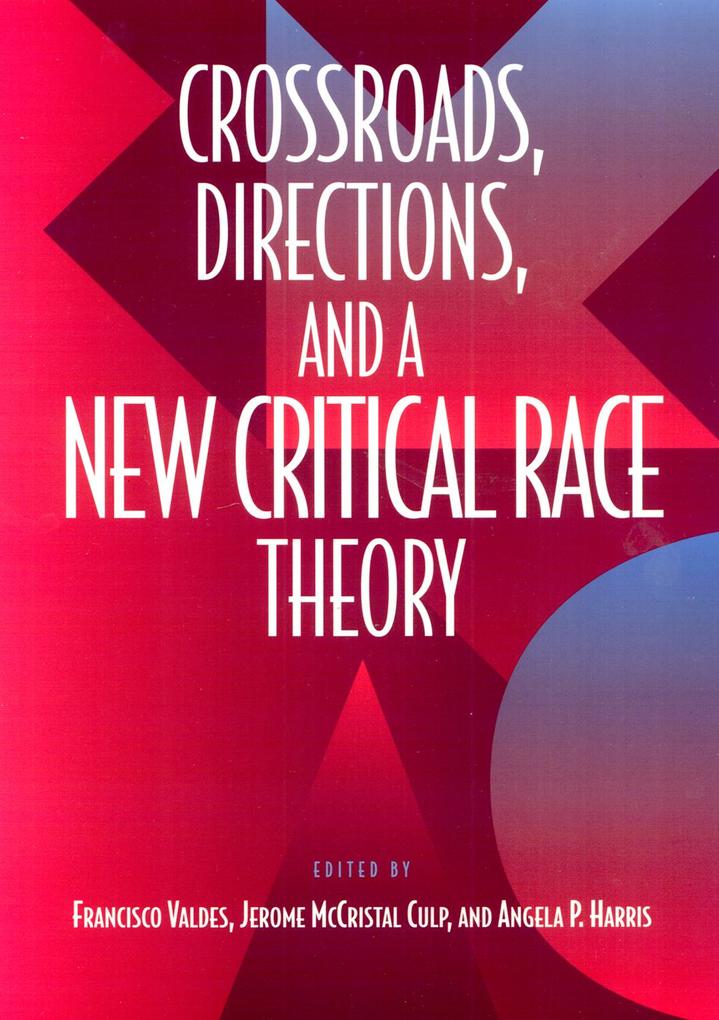
Zustellung: Fr, 01.08. - Do, 07.08.
Versand in 3-4 Wochen
VersandkostenfreiIts opponents call it part of "the lunatic fringe, " a justification for "black separateness, " "the most embarrassing trend in American publishing." "It" is Critical Race Theory.
But what is Critical Race Theory? How did it develop? Where does it stand now? Where should it go in the future? In this volume, thirty-one CRT scholars present their views on the ideas and methods of CRT, its role in academia and in the culture at large, and its past, present, and future.
Critical race theorists assert that both the procedures and the substance of American law are structured to maintain white privilege. The neutrality and objectivity of the law are not just unattainable ideals; they are harmful fictions that obscure the law's role in protecting white supremacy. This notion -- so obvious to some, so unthinkable to others -- has stimulated and divided legal thinking in this country and, increasingly, abroad.
The essays in Crossroads, Directions, and a New Critical Race Theory -- all original -- address this notion in a variety of helpful and exciting ways. They use analysis, personal experience, historical narrative, and many other techniques to explain the importance of looking critically at how race permeates our national consciousness.
But what is Critical Race Theory? How did it develop? Where does it stand now? Where should it go in the future? In this volume, thirty-one CRT scholars present their views on the ideas and methods of CRT, its role in academia and in the culture at large, and its past, present, and future.
Critical race theorists assert that both the procedures and the substance of American law are structured to maintain white privilege. The neutrality and objectivity of the law are not just unattainable ideals; they are harmful fictions that obscure the law's role in protecting white supremacy. This notion -- so obvious to some, so unthinkable to others -- has stimulated and divided legal thinking in this country and, increasingly, abroad.
The essays in Crossroads, Directions, and a New Critical Race Theory -- all original -- address this notion in a variety of helpful and exciting ways. They use analysis, personal experience, historical narrative, and many other techniques to explain the importance of looking critically at how race permeates our national consciousness.
Inhaltsverzeichnis
Foreword: Who Are We? And Why Are We Here? Doing Critical Race Theory in Hard Times --Charles R. Lawrence III Introduction: Battles Waged, Won, and Lost: Critical Race Theory at the Turn of the Millennium --Francisco Valdes, Jerome McCristal Culp, and Angela P. Harris Part I: Histories 1. The First Decade: Critical Reflections, or "A Foot In the Closing Door" --Kimberle Williams Crenshaw 2. Historicizing Critical Race Theory's Cutting Edge: Key Movements that Performed the Theory --Sumi Cho and Robert Westley 3. Keeping It Real: On Anti-"Essentialism" --Catharine A. MacKinnon Part II: Crossroads Section A: Race Critiquing "Race' and Its Uses: Critical Race Theory's Uncompleted Argument --Robert S. Chang 4. The Poetics of Colorlined Space --Anthony Paul Farley 5. Un-Natural Things: Constructions of Race, Gender, and Disability --Robert L. Hayman, Jr., and Nancy Levit 6. Race and the Immigration Laws: The Need for Critical Inquiry --Kevin R. Johnson 7. "Simple Logic": Race, the Identity Documents Rule, and the Story of a Nation Besieged and Betrayed --Sherene H. Razack 8. Straight Out of the Closet: Race, Gender, and Sexual Orientation --Devon W. Carbado Section B: Narrativity Celebrating Racialized Legal Narratives --Margaret E. Montoya 9. The Unbearable Whiteness of Being --Thomas Ross 10. Construction Project: Color Me Queer + Color Me Family = Camilo's Story --Victoria Ortiz and Jennifer Elrod 11. On Being Homeless: One Aboriginal Woman's "Conquest" of Canadian Universities --1989-98 --Patricia Monture-Angus 12. Dinner and Self-Determination --Henry J. Richardson III Section C: Globalization Critical Race Theory in Global Context --Celina Romany 13. Global Markets, Racial Spaces, and the Role of Critical Race Theory in the Struggle for Community Control of Investments: An Institutional Class Analysis --Elizabeth M. Iglesias 14. Global Feminism at the Local Level: The Criminalization of Female Genital Surgeries --Isabelle R. Gunning 15. Breaking Cycles of Inequality: Critical Theory, Human Rights, and Family In/Justice --Berta Esperanza Hermandez-Truyol 16. Critical Race Theory and Post-Colonial Development --Enrique R. Carrasco Part III: Directions 17. Critical Coalitions: Theory and Praxis --Julie A. Su and Eric Y. Yamamoto 18. Beyond, and Not Beyond, Black and White: Deconstruction has a Politics --Mari Matsuda 19. Outsider Scholars, Critical Race Theory, and "Outcrit" Perspectivity: Postsubordination Vision as Jurisprudential Method --Francisco Valdes Afterword: The Handmaid's Truth --Derrick A. Bell About the Contributors
Produktdetails
Erscheinungsdatum
12. August 2002
Sprache
englisch
Seitenanzahl
438
Autor/Autorin
Francisco Valdes
Verlag/Hersteller
Produktart
kartoniert
Gewicht
889 g
Größe (L/B/H)
250/174/27 mm
ISBN
9781566399302
Pressestimmen
"The book will appeal to race and legal scholars in the US as well as in the UK. The breadth of topics and methodologies covered within the volume is certainly impressive and the teaming of chapters from established academics with younger scholars give the book a fresh approach to the study of critical race theory." --The Journal of Ethnic and Racial Studies
Bewertungen
0 Bewertungen
Es wurden noch keine Bewertungen abgegeben. Schreiben Sie die erste Bewertung zu "Crossroads, Directions and a New Critical Race Theory" und helfen Sie damit anderen bei der Kaufentscheidung.







